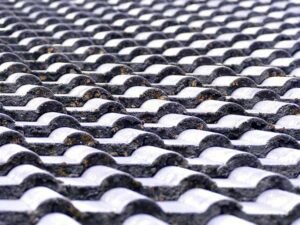In recent years, sustainability has become the highest priority for home and commercial interiors. Nowadays, more people want materials that give them durability and eco-friendly initiatives. One element integral to this transition is flooring, an essential element of every space. Eco-friendly flooring options gain significant momentum if they are for homes, offices, or even public spaces, maintaining their functionality while targeting environmental responsibility.
One of the leading alternatives in this trend is linoleum flooring in the UK, which has returned recently due to its sustainable composition and durability. As industrial manufacturing is still one of the most environmentally harmful processes, consumers aim for alternatives that are as aesthetically pleasing as they are sustainable.
Understanding the Eco-Friendly Flooring Revolution
Eco-friendly flooring does not simply mean using natural materials; its characteristics include energy-efficient production, recyclability, and using products with a small carbon footprint. Sustainable flooring uses renewable resources so that resources used do not run out or pollute too much.
Significant advancements in flooring technology over the years have led manufacturers to produce products that meet the most stringent environmental standards. Various materials have been brought to market, from reclaimed wood to cork and bamboo. However, linoleum is unique in its mix of sustainability, resilience, and versatile design.
Why Linoleum is a Preferred Choice
Linoleum is over a century old, but its advantages make it a contemporary rubber stamp for any space. In contrast to other synthetic flooring materials, linoleum is derived from natural raw resources, such as linseed oil, wood flour, cork dust, and natural pigments. It is ‘bio-based’, and due to its composition, it is 100% biodegradable and has no harmful Volatile Organic Compounds (VOCs) that could contribute to indoor air pollution.
New linoleum technology makes it resistant to heavy foot traffic, making it great for UK homeowners. It is also highly resistant to moisture and bacterial growth, which is critical in places like healthcare facilities, schools and homes with young children or pets.
The Versatility of Eco-Friendly Flooring
One key advantage of sustainable flooring, which is driving the increasing adoption of it, is its versatility. Eco-friendly flooring options can accommodate a variety of aesthetics and functional needs, from classic styles to modern sensibilities.
Thanks to advances in manufacturing processes, sustainable flooring is available in a wide range of colours, textures, and finishes. This allows property owners and designers to create stylish backgrounds without crossing the sustainability red lines. From rustic hardwood appearances to fashionable minimalist styles, eco-friendly floors fit naturally into wide-ranging interior designs.
The Long-Term Benefits of Sustainable Flooring
In addition to environmental contributions, sustainable flooring solutions offer long-term benefits and durability, making them an economically sound choice. With little maintenance, high-quality materials such as linoleum, bamboo, and reclaimed wood are meant to last decades. This extends the lifespan of flooring products, reducing the frequency of replacements and decreasing the overall environmental footprint associated with flooring manufacturing and disposal.
Green flooring is also hypoallergenic, as it does not allow dust, allergens, or pet hair to accumulate. This makes it ideal for people with respiratory sensitivities or allergies and contributes to a healthier indoor atmosphere.
Innovations in Green Flooring Technology
Thus, the flooring industry has also experienced many advancements in improving materials’ sustainability and functional efficiency. Some manufacturers are considering using recycled materials in their processes, which would create even less waste. Others work on carbon-neutral production, so their flooring choices align with global sustainability efforts.
As companies increasingly focus on renewable energy sources, many flooring manufacturers are turning to solar and wind energy to power their facilities. This change lowers carbon emissions and sets new responsible production standards.
Choosing the Right Sustainable Flooring for Your Space
Choosing the best flooring depends on its purpose, use, foot traffic level, and design preferences. In environments with high foot traffic, like commercial and/or educational environments, hardy products like linoleum offer the right mix of performance and ecological credentials. Alternatively, those looking for a warmer, more organic feel might choose bamboo or cork flooring.
Maintenance is another primary consideration. But choosing low-maintenance sustainable flooring doesn’t mean no maintenance. Simple practices like cleaning regularly with non-toxic products and putting protective pads beneath furniture appendages can help preserve the integrity of sustainable flooring materials.
The Future of Eco-Friendly Flooring in the UK
Due to the growing awareness of environmental responsibility, the need for sustainable flooring solutions will rise accordingly. With efforts to shift toward more sustainable building materials and the push for regulations against harmful, environmentally damaging products, the flooring industry will experience a large-scale change.
Interest in sustainable flooring is mainly growing in the UK, where there are broader initiatives to achieve carbon neutrality. Professionals, from architects to interior designers to homeowners, place more importance on materials that will meet sustainability targets while not sacrificing quality and aesthetics. One of the leading choices in this movement is linoleum flooring in the UK, an eco-friendly and elegant product that proves that eco options are not without their aesthetic merits.
Conclusion
This movement toward more environmentally sound and resilient flooring is not a fad but a demand for building sustainable homes and offices. While new materials like linoleum, bamboo and reclaimed wood are coming into the spotlight, the industry is making strides in sustainability. As consumers grow increasingly discerning, the desire for sustainable flooring options will remain a driving force in the evolution of interior design, allowing aesthetics and sustainability to move in lockstep.
Primary Keyword: linoleum flooring in the UK
Meta Description: Discover eco-friendly and resilient flooring solutions that combine sustainability with durability and style.










